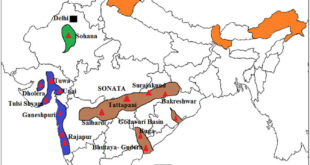- The English computer scientist Alan Turing’s “imitation game” or “Turing test” takes the stance that a machine successfully represents a human if it responds to a question like a human mind does.
- From Plato’s mimesis (representation) as the principle of art, to the Turing test, and to recent progresses in artificial intelligence, “the key to artificial intelligence has always been the representation” (Jeff Hawkins).
- Taking representation further, can a machine “create” new things? Latest advancements in technology have attempted to “create”.
- The recent buzz around ChatGPT (Chat Generative Pre-trained Transformer), a software tool that can answer questions on almost any topic, carry on conversations with humans, write poems, computer programs and perform many more complex tasks that require intelligence, is testimony that artificial intelligence can “create”. One can also mention here Google’s product LaMDA (Language Model for Dialogue Applications) that is similar to ChatGPT and other sophisticated products (Dall E) that can create image from verbal descriptions.
- Broadly speaking, the products mentioned above learn to be creative from already existing information: human conversations and documents and pictures, to synthesise and create.
Research by a machine
- In early 2021, a team of Israeli scientists announced a software tool called The Ramanujan Machine that creates mathematical conjectures which are equations without proof.
- Mathematicians then prove or disprove these conjectures, thereby establishing theorems. Conjectures in mathematics shed light on newer frontiers that otherwise lurk in tenebrous corners. Srinivasa Ramanujan was famous for such conjectures.
- From 1904 till his passing in 1920, Ramanujan, recorded more than 3,000 equations that were mostly conjectures because he did not supply proof.
- The American mathematician Bruce C. Berndt, an expert on Ramanujan’s works, says that most of Ramanujan’s conjectures are correct as established by the proofs provided paripassu with their generalisation in the last 100 years.
‘Unparalleled ability’
- To understand this, one may consider Ramanujan’s formulae on (22/7 is only an approximation to ).
- In 1914, Ramanujan published multiple formulae to compute using modular equation which is, roughly speaking, an equation in x that equals the same equation in powers of x, i.e., xn; the solutions of the equation were manipulated to yield the decimals of to astonishing accuracy. The mathematicians J.M. Borwein and P.B. Borwein who computed to great accuracy in the 1980s said, “Ramanujan was unparalleled in his ability”.
- However, the Ramanujan Machine adopts a different approach to compute formulae for mathematical constants such as , e, etc.
- It does so by taking a mathematical structure such as a continuous fraction on one side of an equation and the mathematical constant such as on the other side, with the two sides yet to be matched.
- The software then employs high computing power and algorithms to iteratively match both sides and a conjecture is discovered. In the last couple of years, dozens of conjectures have been discovered this way.
- Is this advancement a pronouncement that Ramanujan’s creativity was held high solely by the stanchions of his calculating speed and memory
- Mathematicians aver that Ramanujan’s intuition, as seen in his works, was non pareil; Ramanujan could connect different mathematical domains deeply with “invincible originality” (G.H. Hardy).
- The ramifications of such connections between mathematical abstractions that Ramanujan was prescient of have continued to unravel for over a century now, leading to remarkable technological applications.
- For example, elliptic curves are widely studied in number theory because of their properties that have applications in cryptography which make computer network communications secure.
- Ramanujan’s contributions here are significant: he developed certain equations called class invariants which generate elliptic curves suitable for encryption and this led to Elliptic Curve Cryptography, an efficient cryptographic technique, in 1985, many decades after his demise.
A leap of genius
- Another instance of his originality was his discovery of mock-theta functions, his swan song; working on it might have been a palliative to him in his painful last days.
- George Andrews, an American mathematician and an expert on mock theta function, elegantly surmised that Ramanujan might have discovered it by starting from hypergeometric series whose consecutive terms form ratios that follow a pattern.
- George Andrews adds that it is a plausible method to arrive at mock-theta functions “provided you had the genius to recognize”.
- In the light of such deep insights from Ramanujan, George Andrews remarked on the eponymous machine, “I expect its role to be that of an important auxiliary tool.”
- Formulae involving fundamental constants such as have been discovered only sporadically in mathematical history; and by making such discoveries automatic and more frequent, the machine can lead to more frequent mathematical advancements.
- In general, artificial intelligence tools are expected to make things happen faster because they now imitate cogitation.
SOURCE: THE HINDU, THE ECONOMIC TIMES, PIB
 Chinmaya IAS Academy – Current Affairs Chinmaya IAS Academy – Current Affairs
Chinmaya IAS Academy – Current Affairs Chinmaya IAS Academy – Current Affairs



